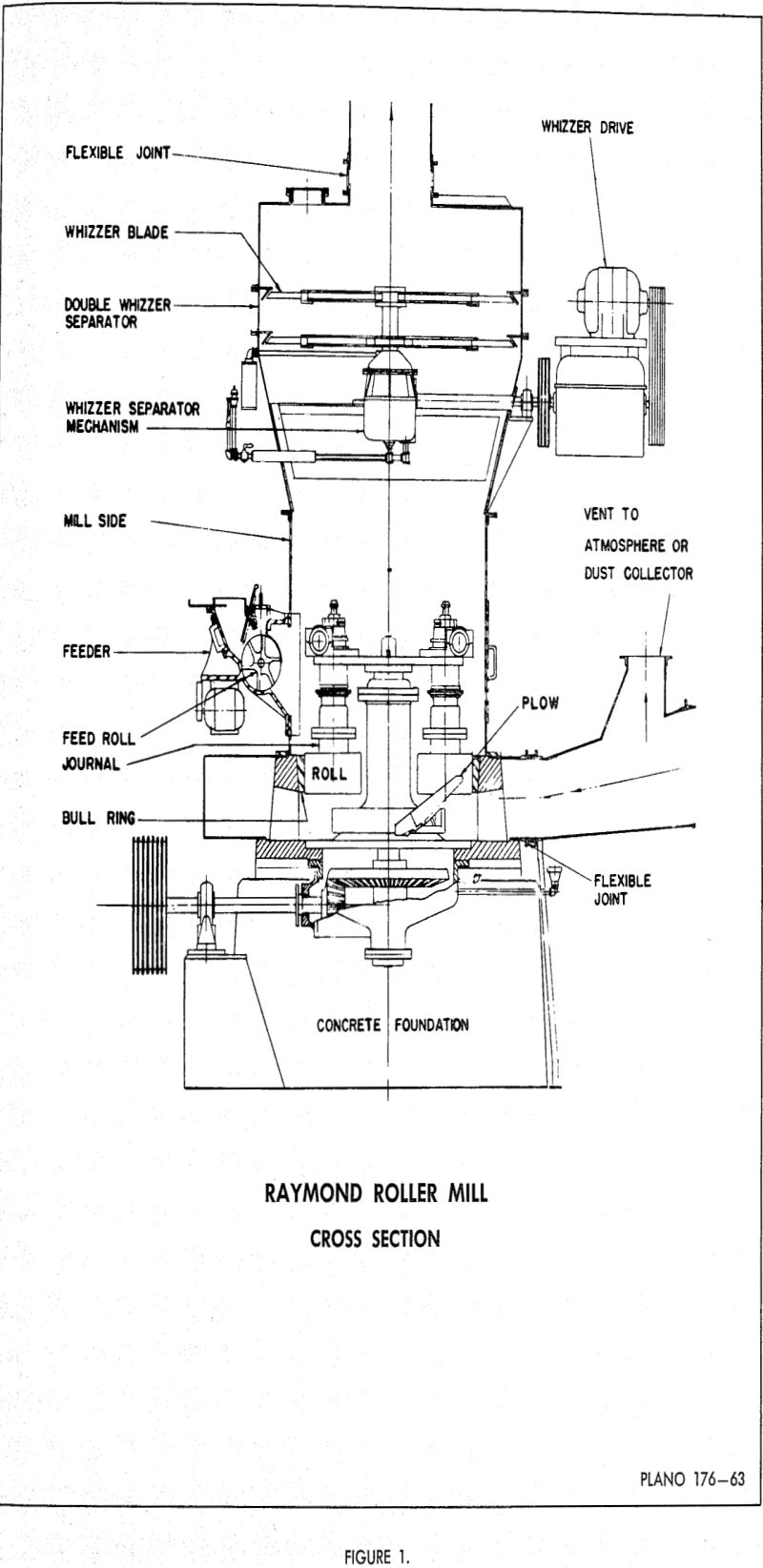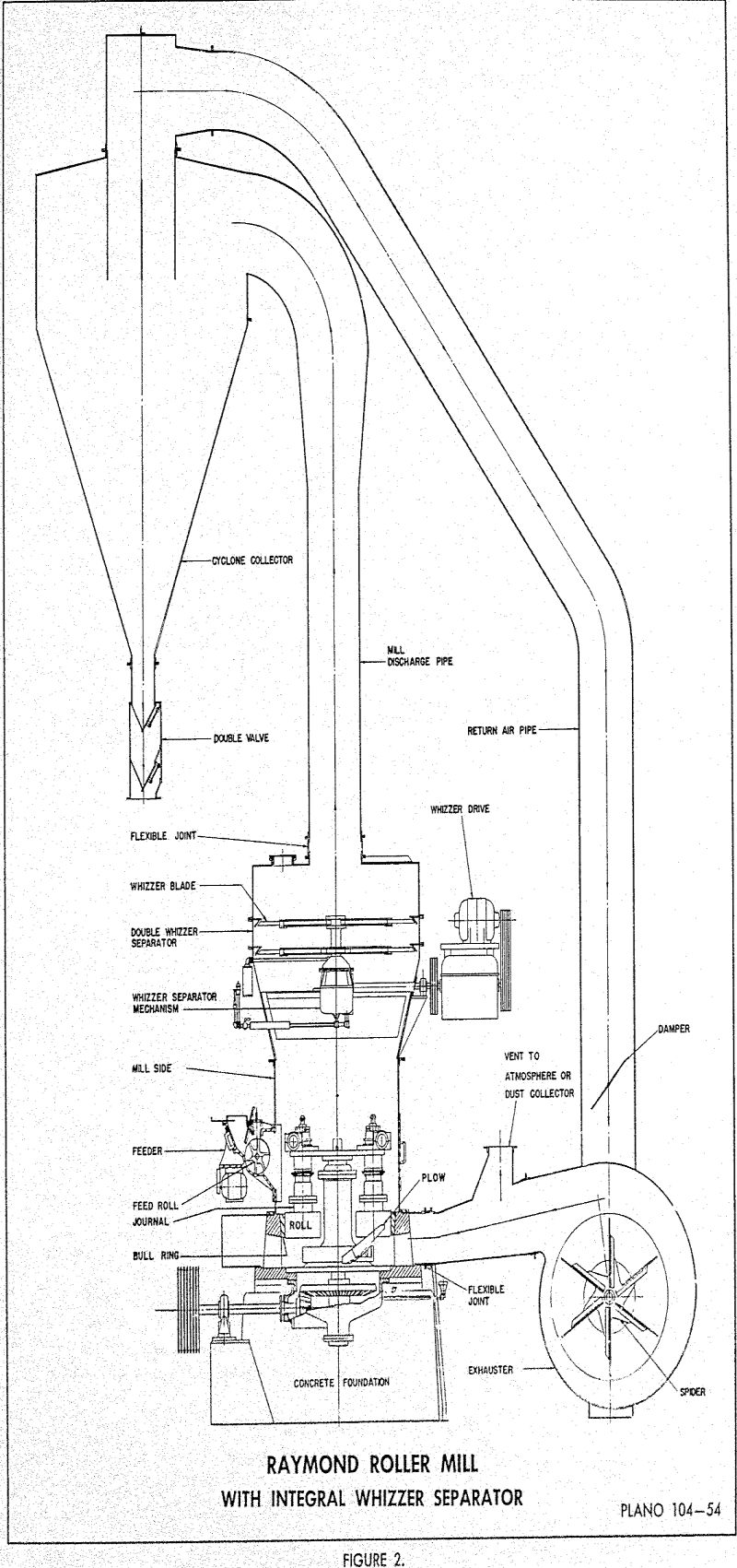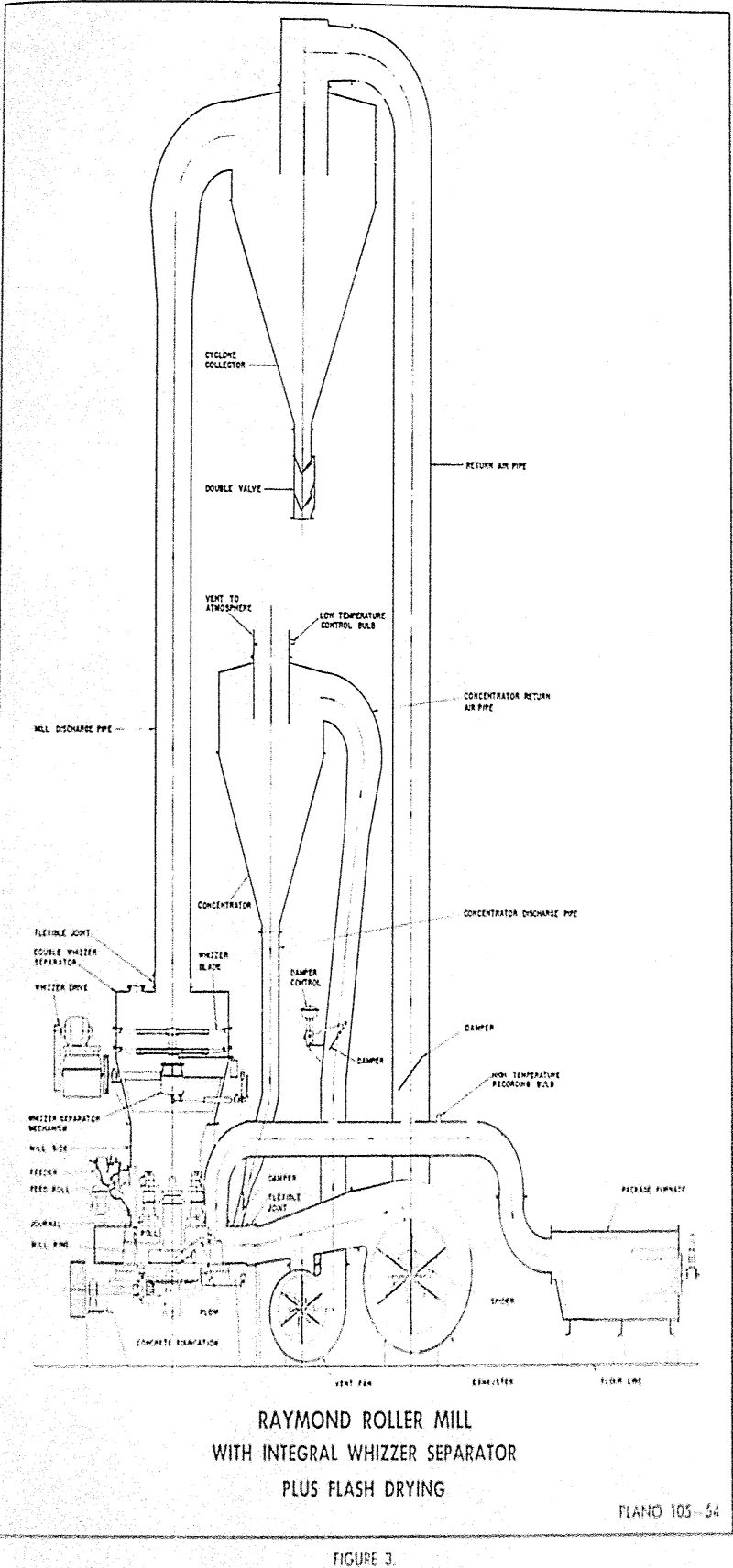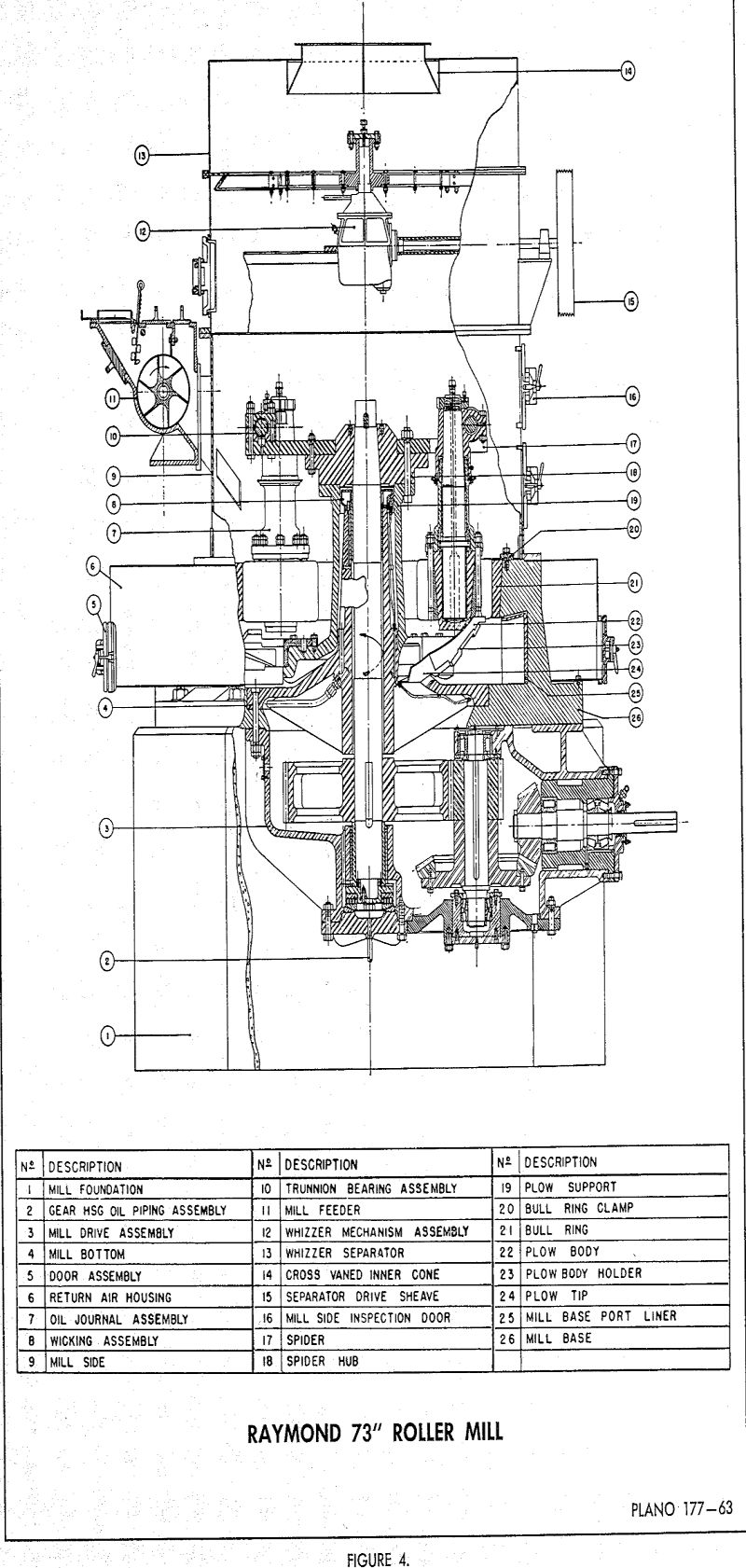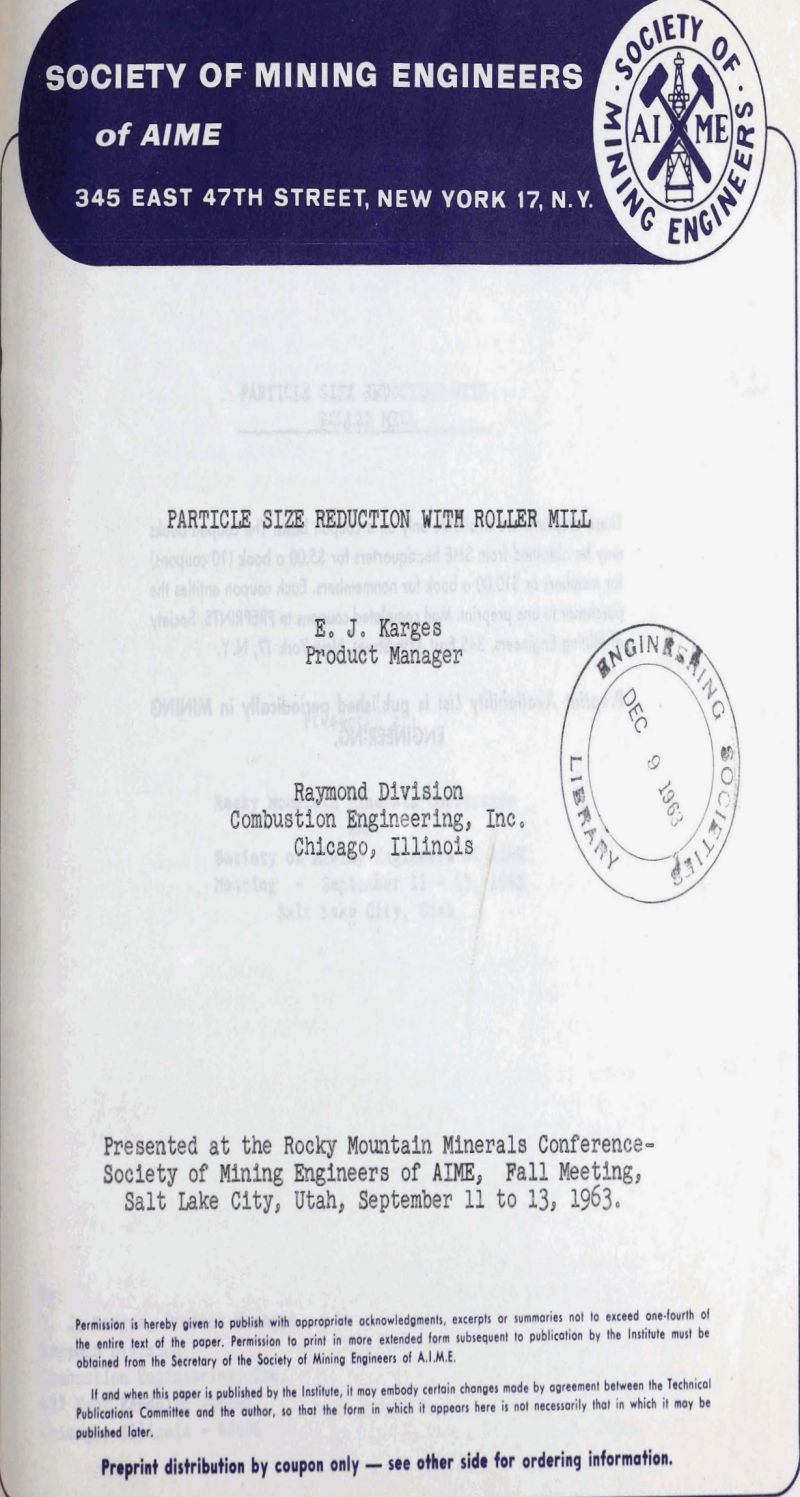Table of Contents
For reasons well known to Mining Engineers, fine grinding in the wet form is quite universal in plants engaged in the extraction of metallic values from crude ores. In the processing of non-metallic and industrial minerals, however, fine grinding in dry form is the more common method. The crude materials generally contain less moisture than required for wet grinding, and the products are usually marketed or used in the dry form, most of them as powders.
Raymond Roller Mill Grinding Principle
To a vary large extent the Roller action within these mills reduces particles by compression. Nevertheless there is a certain amount of attrition which is inherent and important. There is also a certain degree of impact.
The amount, of compression is provided and controlled mainly by mill speed. There are, however, various devices today for adding or reducing pressure at a given mill speed.
The amount of attrition can be increased by special design of the grinding surfaces when desired. For instance, concave grinding rings and convex rolls have proven effective for certain applications.
The Roller Mill as we know it today is an adaptation of an earlier mill which was used for many years for wet grinding with gravity discharge. The application of internal air separation to this mill was an original Raymond Brothers invention during the middle 1890’s. Internal air separation as an integral part of this mill provided a revolutionary break-through in making possible the grinding of non-metallic minerals and other materials to high fineness in low cost, large capacity, pulverizing equipment.
Handling, a large volume of air through these mills also makes possible the ability to dry and grind in one operation. With the advent of the Raymond Roller Mill it therefore became possible to combine, in one self-contained system, the previous separate functions of drying, grinding, classifying, and conveying the finished product to storage.
Range of Materials Pulverized
The Roller Mill is not suitable for the fine grinding of abrasive materials. The proper fields of application are the reduction of non-metallic minerals, rock products, and similar manufactured products.
Materials having a hardness up to about 5 on Moh’s Scale are generally good applications. There is, however, the farther limitation that such, materials must not contain excessive free silica in the form of sand, flint or quartz.
Ordinary window glass, or the blade of a good knife, has a hardness a little greater than 5. Generally speaking, therefore, materials which scratch glass or scratch a good knife blade are too hard or abrasive for Roller Mill reduction. The exercise of care is necessary, however, in making sure that the scratching is traceable to the basic material itself, rather than to the presence merely of a small percentage of free silica or other impurities
Simultaneous Drying and Grinding
Substantial quantities of air are handled through a Roller Mill for several reasons, as already mentioned. When the feed is dry, and the product is not temperature-sensitive, most of this air is re-circulated. Actually it is necessary to vent only that small quantity of air which leaks into the system, the system being entirely under suction.
Forty years ago, whenever a material was wet, it was necessary to use a separate dryer ahead of a fine grinding mill, feeding the mill dry material only.
When using a Roller Mill as a combination drying and grinding unit it must be borne in mind that the pulverizing capacity of the mill is relatively large as compared to its drying capacity. The drying capacity is limited principally because of temperature limitations an certain of the machinery items.
In the case of limestone, as an example, and similar hard, dense material, the pre-crushed feed, even with a significant fraction of fines present, will seldom run as high as 5 to 6% H2O. This is an excellent application for within-mill drying.
